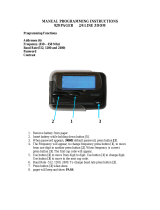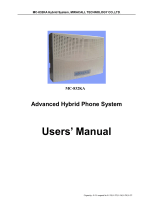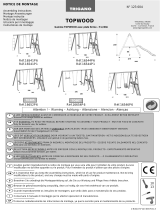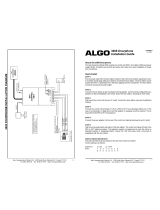
PT Programming Manual 5
[330] ARS Routing Plan Time Table.................................................................................................................24
[331–346] ARS Routing Plan Table (1–16) (KX-TDA50/KX-TDA100/KX-TDA200 only) ..................................24
[347] ARS Routing Plan Table (1–48) (KX-TDA600 only) ................................................................................24
[350] ARS Carrier Name ..................................................................................................................................24
[351] ARS Trunk Group for Carrier Access ......................................................................................................24
[352] ARS Removed Number of Digits for Carrier Access...............................................................................25
[353] ARS Carrier Access Code ......................................................................................................................25
2.1.7 CO Line Programming ..................................................................................................... 25
[400] LCOT CO Line Connection .....................................................................................................................25
[401] LCOT CO Line Name..............................................................................................................................25
[402] LCOT Trunk Group Number ....................................................................................................................25
[409] LCOT CO Line Number Reference .........................................................................................................26
[410] LCOT Dialing Mode.................................................................................................................................26
[411] LCOT Pulse Rate ....................................................................................................................................26
[412] LCOT DTMF Minimum Duration .............................................................................................................26
[413] LCOT CPC Signal Detection Time—Outgoing........................................................................................26
[414] LCOT CPC Signal Detection Time—Incoming........................................................................................26
[416] LCOT Pause Time...................................................................................................................................26
[417] LCOT Flash/Recall Time.........................................................................................................................27
[418] LCOT Disconnect Time...........................................................................................................................27
[450] DIL 1:1 Destination .................................................................................................................................27
[451] DID Number (KX-TDA100/KX-TDA200/KX-TDA600 only) ......................................................................27
[452] DID Name (KX-TDA100/KX-TDA200/KX-TDA600 only) .........................................................................27
[453] DID Destination (KX-TDA100/KX-TDA200/KX-TDA600 only).................................................................27
[470] Trunk Group Intercept Destination (not applicable for MPR Software File Version 3.1000 or later)........28
[471] Host PBX Access Code ..........................................................................................................................28
[472] Extension-to-CO Line Call Duration........................................................................................................28
[473] CO-to-CO Line Call Duration ..................................................................................................................28
[475] DISA Silence Detection...........................................................................................................................28
[476] DISA Continuous Signal Detection .........................................................................................................29
[477] DISA Cyclic Signal Detection..................................................................................................................29
[490] Caller ID Signal Type ..............................................................................................................................29
2.1.8 COS Programming........................................................................................................... 29
[500] Trunk Group Number ..............................................................................................................................29
[501] TRS Level ...............................................................................................................................................29
[502] CO Line Call Duration Limitation.............................................................................................................30
[503] Call Transfer to CO Line..........................................................................................................................30
[504] Call Forwarding to CO Line.....................................................................................................................30
[505] Executive Busy Override .........................................................................................................................30
[506] Executive Busy Override Deny................................................................................................................30
[507] DND Override .........................................................................................................................................30
[508] Account Code Mode ...............................................................................................................................30
[509] TRS Level for System Speed Dialing......................................................................................................31
[510] TRS Level for Extension Dial Lock..........................................................................................................31
[511] Manager Assignment ..............................................................................................................................31
[512] Permission for Door Open Access ..........................................................................................................31
[514] Time Service Manual Switching..............................................................................................................31
[515] Wireless XDP Parallel Mode for Paired Telephone .................................................................................31
[516] Programming Mode Limitation ................................................................................................................31
2.1.9 Extension Programming................................................................................................... 32
[600] EXtra Device Port (XDP) Mode...............................................................................................................32
[601] Terminal Device Assignment...................................................................................................................32
[602] Class of Service ......................................................................................................................................32
[603] Extension User Group.............................................................................................................................32
[604] Extension Intercept Destination ..............................................................................................................33
[605] Call Forwarding—No Answer Time .........................................................................................................33
[606] CLIP Number ..........................................................................................................................................33
[620] Incoming Call Distribution Group Member ..............................................................................................33
[621] Incoming Call Distribution Group Delayed Ringing .................................................................................33























